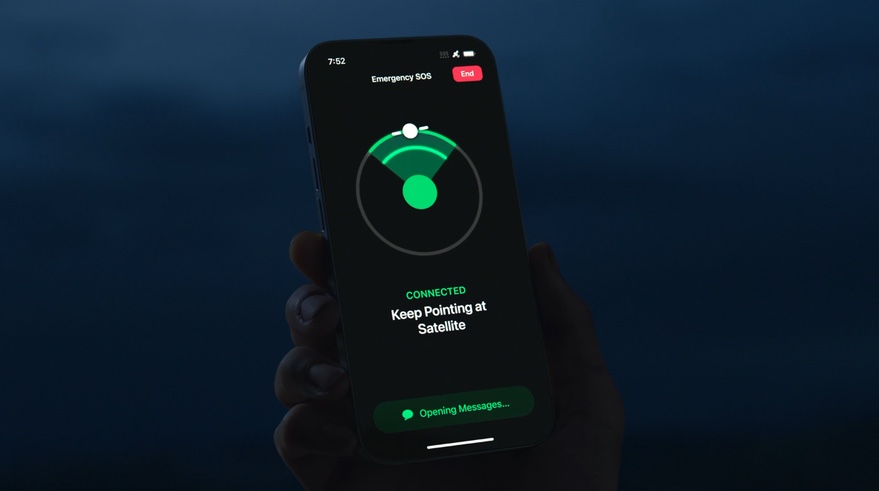WASHINGTON — Apple formally announced its long-anticipated partnership with Globalstar Sept. 7 to provide satellite messaging services for new iPhones and becoming Globalstar’s biggest customer.
At an event to unveil new iPhone and other products, Apple said the new iPhone 14 series will include an “Emergency SOS” feature that will allow users to send emergency messages via satellite when out of terrestrial network coverage. Those services will start in November and will be available initially in the United States and Canada. Those services will be free for at least the first two years.
In the presentation, Apple emphasized the difficulty of providing connectivity via satellite for its phones. “The bandwidth is so limited that even sending a text message is a technical challenge,” said Ashley Williams, manager of satellite modeling and simulation at Apple.
The phone features customized hardware and software to allow it to connect via satellite. “That connection is only possible when the phone is pointing directly at a satellite,” she said, with the phone offering special interface to instruct the user where to point the phone to create and maintain a connection. That eliminates the need for a special external antenna like those on conventional satellite phones.
In the presentation, Apple did not disclose what satellite system the phone would communicate with, focusing instead on how the system is designed to efficiently collect information and transmit it via text messages either directly to emergency services providers or to “relay centers” where operators would then call a provider.
“It took years to make this vision a reality, through game-changing hardware, software and infrastructure innovation,” Williams said.
In a filing with the U.S. Securities and Exchange Commission immediately after the announcement, Globalstar revealed that it will provide the satellite connectivity for Apple’s Emergency SOS service, confirming long-held industry speculation that Apple was the unnamed partner Globalstar mentioned it had been working with since 2020.
The so-called “Terms Agreement” with Apple that Globalstar had mentioned in past filings included several milestones, including construction of 10 new gateways worldwide and the launch of a spare satellite in June. Apple will also fund 95% of costs of a new generation of satellites Globalstar ordered in February from MDA Ltd. and Rocket Lab.
As part of the agreement, Globalstar said it will allocate 85% of its network capacity to Apple. Globalstar said it will continue to offer its own services, such as internet-of-things connectivity, through the remaining 15% of capacity on the system, while also exploring terrestrial applications of its spectrum.
“Globalstar expects that its business strategy will allow it to generate reliable cash flow with substantial growth potential and greater profitability,” the company said in its SEC filing. The company, which reported $124.3 million in revenue in 2021, says it expects to increase that to between $185 million and $230 million in 2023, with a further 35% increase by 2026.
With its partnership with Globalstar, Apple formally joins an increasingly crowded market for direct-to-handset satellite connectivity services. AST SpaceMobile and Lynk are developing their own satellite constellations to provide messaging, and eventually voice and data, services to unmodified phones. SpaceX and T-Mobile announced a partnership Aug. 25 where second-generation Starlink satellites, expected to start launching next year, will provide connectivity to cellphones using T-Mobile spectrum.
